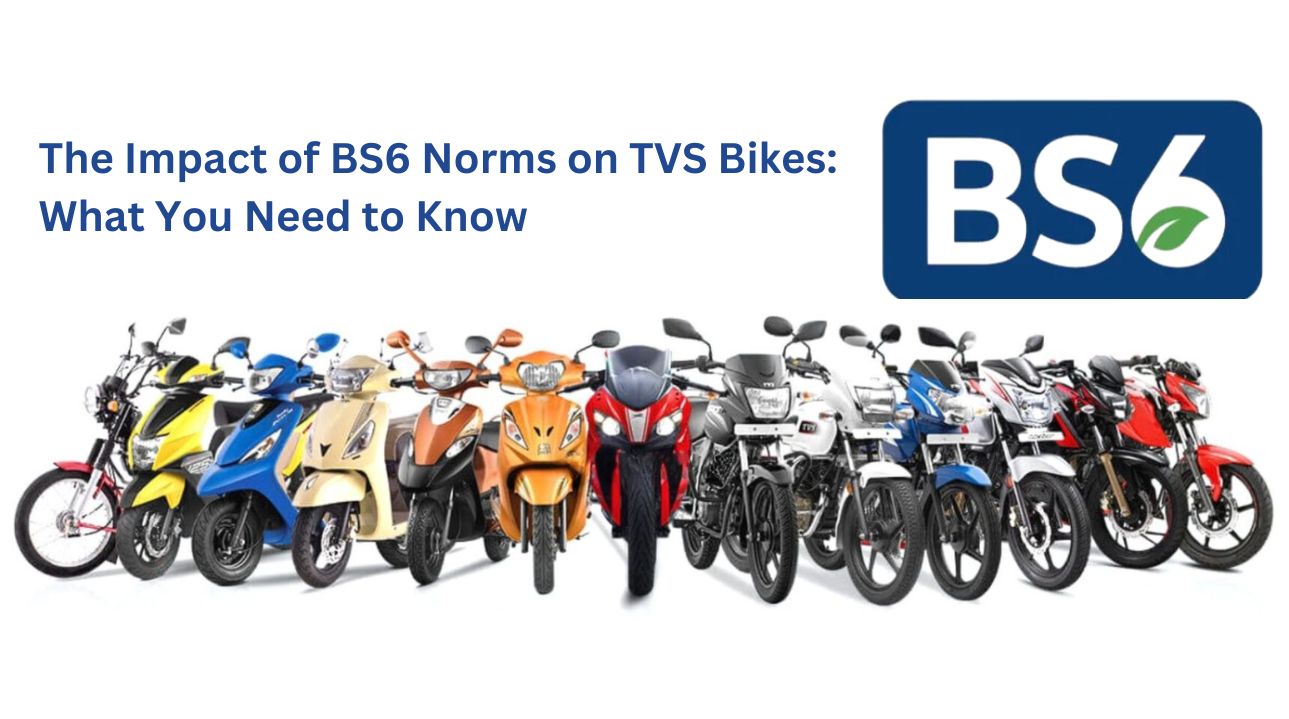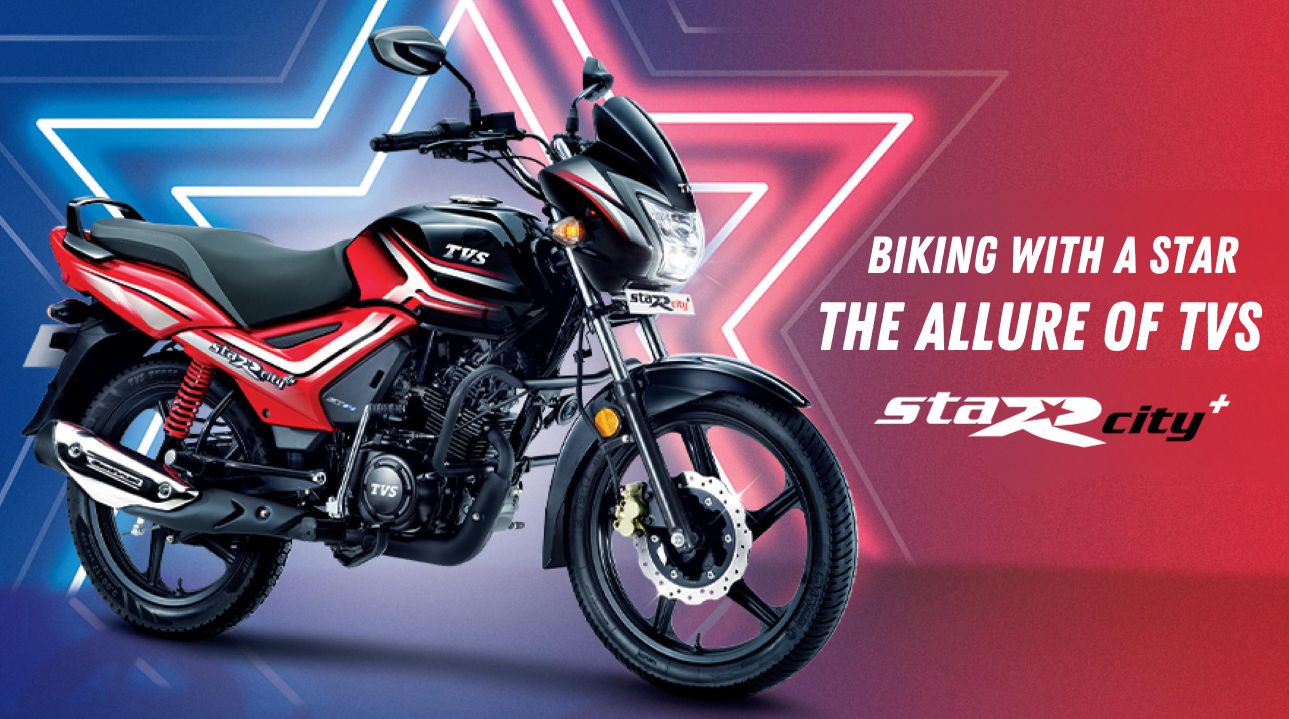With the introduction of the Bharat Stage 6 (BS6) emission norms in India, the automotive industry has undergone significant changes to comply with the stricter regulations. For two-wheeler manufacturers like TVS Motors, adhering to these new standards was both a challenge and an opportunity to innovate. This blog explores the impact of BS6 norms on TVS bikes, highlighting what you need to know about the changes, and improvements, and how they affect your riding experience.
What Are BS6 Emission Norms?
The BS6 norms, implemented by the Indian government on April 1, 2020, replaced the BS4 standards. These regulations are aligned with the Euro 6 standards followed in Europe and aim to drastically reduce harmful emissions, such as nitrogen oxides (NOx), particulate matter (PM), hydrocarbons (HC), and carbon monoxide (CO). The introduction of BS6 marked a significant leap in controlling vehicular pollution in India.
For two-wheelers like TVS bikes, these norms mean upgrading to cleaner engines, improved fuel efficiency, and a focus on sustainability without compromising on performance.
Key Changes in TVS BS6 Bikes
TVS Motors has always been at the forefront of adopting new technologies. With the advent of BS6, TVS embraced a series of changes across its portfolio. Here are the major upgrades seen in BS6-compliant TVS bikes:
-
Enhanced Fuel Injection Technology:
One of the most significant changes in BS6 TVS bikes is the shift from carbureted engines to fuel-injected ones. Fuel injection technology ensures that the fuel is burned more efficiently, reducing emissions. This technology also improves throttle response, enhances fuel efficiency, and offers a more consistent performance across various riding conditions.
For instance, popular models like the TVS Apache RTR series and the TVS Jupiter have adopted this advanced fuel injection system, resulting in smoother power delivery and reduced fuel consumption. -
Advanced Catalytic Converters:
TVS BS6 bikes are equipped with more sophisticated catalytic converters, which are designed to reduce the amount of harmful gases released into the environment. These converters play a crucial role in filtering out pollutants before they exit the exhaust system. While these components add to the cost of production, they ensure a cleaner ride.
-
Reduction in Nitrogen Oxide Emissions:
BS6 norms have significantly lowered the permissible levels of NOx emissions, which are known to contribute to air pollution and respiratory issues. TVS has implemented several engine modifications, including improved combustion processes, to comply with these stricter emission limits.
-
Introduction of OBD (On-Board Diagnostics):
One of the lesser-known but critical additions in BS6 bikes is the inclusion of On-Board Diagnostics (OBD). The OBD system monitors the real-time performance of the engine and emissions. In case of any malfunction that could lead to increased emissions, the system alerts the rider through an indicator. This helps ensure that the bike remains eco-friendly throughout its lifecycle.
-
Refinement in Engine Components:
To meet BS6 standards, TVS has refined the design and materials used in several engine components, including the piston and cylinder, leading to better combustion and improved performance. While these upgrades may not be visible, they enhance the longevity and reliability of the engine.
How BS6 Norms Affect Performance
One of the primary concerns for bikers with the introduction of BS6 norms was whether these changes would affect the performance of their motorcycles. While some manufacturers faced challenges in balancing performance and emissions, TVS has managed to strike an impressive balance.
-
Slight Reduction in Power Output:
To reduce emissions, BS6 engines are tuned differently, and in some cases, this has led to a slight reduction in power output. However, for TVS bikes, the difference is minimal. Models like the TVS Apache RTR 160 4V, for instance, continue to deliver strong performance, albeit with slightly lower horsepower compared to their BS4 counterparts.
-
Improved Fuel Efficiency:
One of the positives of the BS6 upgrade is improved fuel efficiency. Thanks to the use of fuel injection technology and better combustion, TVS bikes now offer better mileage, which is a significant advantage for daily commuters. Riders will notice fewer trips to the fuel station, making these bikes more economical in the long run.
-
Smoother Ride Experience:
The refined engine components, better throttle response, and reduced emissions result in a smoother and more refined riding experience. TVS has managed to maintain the thrill of riding while ensuring that bikes are environmentally friendly.
The Impact on Cost
One of the downsides of the BS6 upgrade is the increased cost of production, which has led to a hike in the prices of motorcycles. TVS bikes are no exception. The cost of incorporating fuel injection systems, catalytic converters, and OBD systems has added to the overall price of the bikes. However, the long-term benefits, such as improved fuel efficiency, lower emissions, and the overall riding experience, justify the price hike.
For budget-conscious buyers, TVS continues to offer a range of affordable options without compromising on quality. Models like the TVS Radeon and TVS Sport remain accessible even with the BS6 upgrades.
Environmental Benefits
The primary goal of the BS6 norms is to reduce the environmental impact of vehicles, and TVS has successfully achieved this with its BS6-compliant models. The reduction in NOx, HC, and CO emissions ensures that riders are contributing less to air pollution, making TVS bikes a greener choice.
In cities like Delhi and Mumbai, where air quality is a growing concern, choosing a BS6-compliant bike is a responsible decision for environmentally conscious riders.
Conclusion
The implementation of BS6 norms has brought about significant changes in the design, performance, and cost of TVS bikes. While there are minor trade-offs in terms of power output, the benefits of cleaner emissions, better fuel efficiency, and enhanced technology far outweigh the drawbacks. TVS has once again proven its commitment to innovation, ensuring that its bikes not only meet regulatory standards but also deliver a superior riding experience.
As the future moves towards even stricter emission norms and electric mobility, TVS is well-positioned to continue leading the way in the two-wheeler industry.
Follow Us On:










